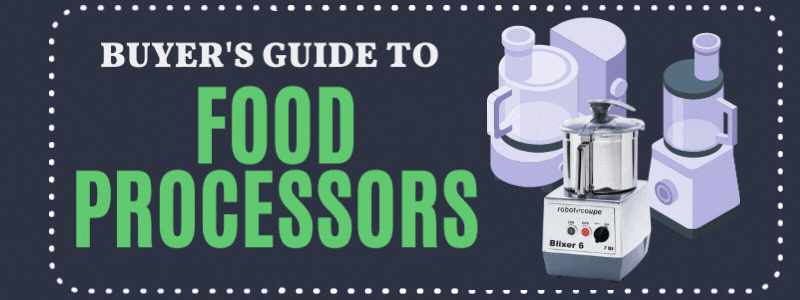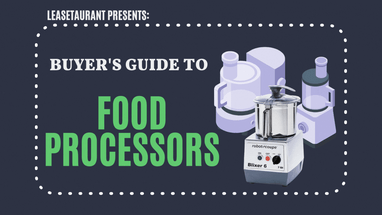Posted by Leasetaurant on 26th Jan 2022
Buyer’s Guide to Commercial Food Processors

Versatile and powerful, food processors allow you to churn through produce, meat, dough, and more, transforming it into a piece of the final product. Easily swappable blades mean you can use one processor to handle multiple jobs.
Leasetaurant offers an array of processor models, and you’ll be able to assess which one is right for you by following the guide below!
Types of Processors
All processor types can have their blades swapped out and customized to process foods differently. The base model you choose will depend on the volume and consistency of the food you want to churn and the speed and output of the blades.
Bowl processors have a blade at the base of their mixing bowl. They’re great for mincing, grinding, or shredding smaller batches of food.
Continuous-fed processors take the food in through a chute, grind it up, and spill it onto a plate or tray placed beside the opening. It’s great for processing bulk amounts of food and great for busy establishments with a constant flow of customers.
(Some processors blend the function of bowl and continuous processors – these are called combination processors!)
Buffalo choppers (also known as bowl choppers or meat choppers) process thick foods in heavy quantities. The blades are laid sideways and can reach speeds up to 4,000 rotations per minute.
Blixers blend and mix food to the point of emulsifying them. That means they can reduce food to liquids and help combine foods that otherwise COULDN’T mix (think oil and water).
Power Ratings
Your unit’s horsepower will determine how much food the blades can slice through. Higher horsepower means it can handle thicker liquids and higher volumes of food.
Finding powerful processors means matching high horsepower with high RPM (rotations per minute). Fast blades don’t mean a thing without the horsepower to cut through tough material. Of course, if you’re just looking for a food dicer for shredding small or thin foods, then a higher RPM and low horsepower will suit your needs just fine.
Food Processor vs. Blender
Blenders are excellent for emulsifying liquids or mixing wet ingredients. But when it comes to breaking down bigger, dry foods, you need a processor. Blenders simply don’t have the versatility of a food processor – if you need to knead dough, for example, you couldn’t swap the blender blades with dough blades.
The shape of the container of each is designed to serve their individual purposes. Food processors have wider and flatter bowls, with wider spanning fans, allowing them to reach a wider surface area of food to slice. Blenders have cylindrical, narrower designs to get all the good stuff to fall to the bottom and are great four pouring liquids out!
With this guide, you’ll be slicing and dicing your way to better production in no time! As always, the team at Leasetaurant is happy to answer any further questions you may have. Happy shopping!



